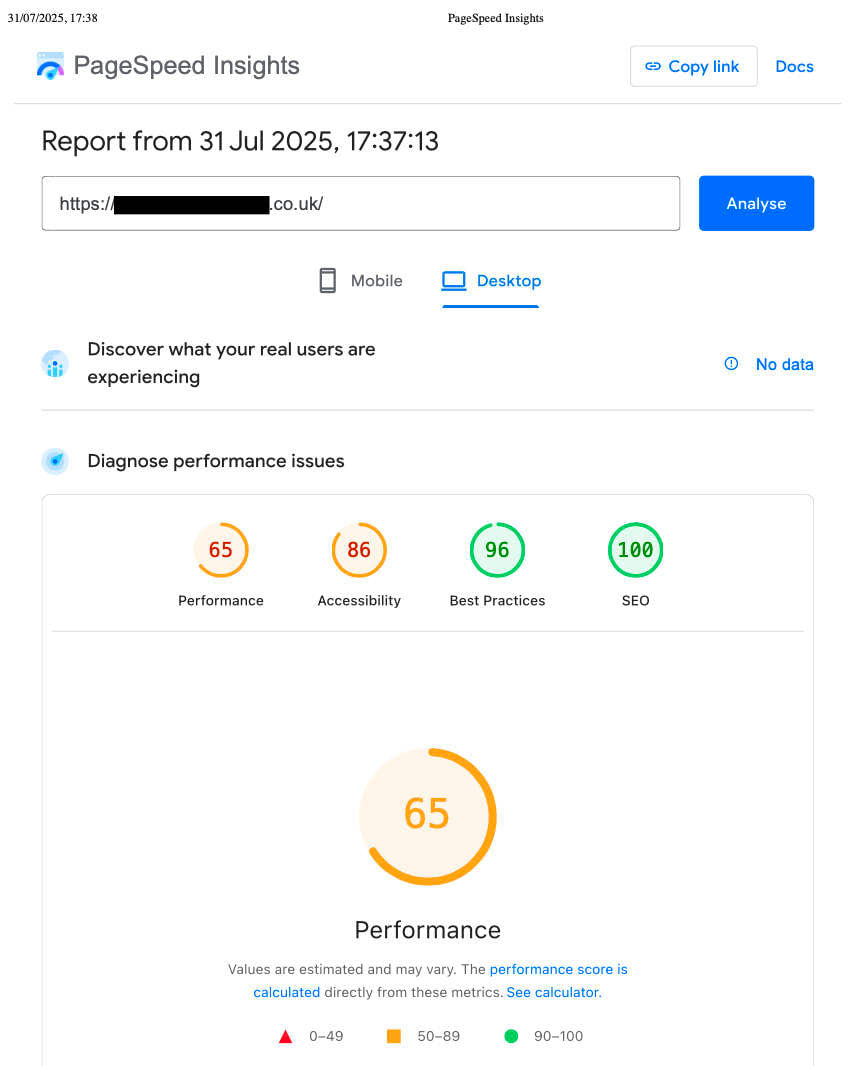What Google PageSpeed Insights Score Reveals About Yoast’s Home Page Performance
- Eugenio

- Aug 21
- 4 min read
Updated: Sep 5
Yoast is the Dutch company behind the widely used Yoast SEO plugin for WordPress. Their stated mission is “SEO for everyone,” and their core product is active on more than 13 million websites worldwide. Beyond software, Yoast runs an SEO Academy that has already helped over 300,000 people improve their skills. As of 2025, the company employs about 110 people, with roughly 70 working at its headquarters in Wijchen, the Netherlands, and the rest distributed globally. With nearly a million visitors to its site each month, Yoast has grown from a one‑person business into one of the most recognised names in the search‑optimisation industry. In this blog post we're looking at what Google PageSpeed Insights score reveals about Yoast’s home page performance.
Introduction
Before we dive into numbers, a quick confession: running a website is a lot like tending a garden. There’s always more that we don’t know than we do, and even the most seasoned gardener will miss a weed here and there. The same goes for web performance; no site is ever truly “finished.” It needs weeding, pruning and a bit of love to stay in tip‑top shape. When we ran Google PageSpeed Insights on Yoast’s own home page, we were taken aback by the results. This is a company whose plugin powers millions of WordPress sites, so we almost want to apologise on their behalf—but the truth is that nobody is infallible. Performance problems can creep in on anyone, which is why small teams like ours in the Blackdown Hills keep a close eye on the garden.

Why Page Speed Matters for SEO
Google uses Core Web Vitals such as largest contentful paint (LCP) and cumulative layout shift (CLS) to rank pages. Sites that load slowly lose visitors; a delay of one second can reduce conversions by 7 %. Even if your content is optimised for keywords, a sluggish site can harm your search visibility and user experience. Search engines want to surface pages that load quickly and run smoothly, which is why optimising for speed is just as important as including relevant keywords and quality content.
Yoast’s Desktop and Mobile PageSpeed Scores: A Closer Look
Desktop results
When we tested Yoast.com via Google PageSpeed Insights, the desktop performance score came in at 66—moderate rather than impressive. The home page delivered a largest contentful paint (LCP) of 2.7 seconds and a cumulative layout shift (CLS) of 0.265, indicating that elements move around during loading. While accessibility and SEO scores were high, the speed metrics show that the page is heavier than it needs to be.
Mobile results
On mobile, Yoast’s home page performance dropped further to 62, with an LCP of 10.6 seconds and a first contentful paint of 3.7 seconds. Slow mobile performance frustrates users and signals to Google that the site isn’t optimised for small‑screen visitors. With more than half of web traffic coming from phones, this is an area that deserves attention.
Even the Big Guys Get It Wrong – And That's Okay
Yoast is one of the best‑known names in SEO, which makes their middling PageSpeed scores all the more surprising. But rather than pointing fingers, let’s treat it as a gentle reminder that nobody gets everything right all the time. Their home page is packed with scripts, analytics trackers and rich media. All that clever functionality makes the page lively, but it also piles on kilobytes that slow things down—particularly on mobile. The PageSpeed report flags render‑blocking resources and unused CSS/JavaScript, and we almost want to say “sorry” on their behalf. Even experts can overlook technical performance when they’re focused on design and features, which is why a little humility—and regular pruning—goes a long way.
Yoast PageSpeed Insights score; What This Means for Your Business Website
If an SEO leader like Yoast struggles with site speed, it highlights how challenging optimisation can be. Speed matters to your customers; nearly 40 % of visitors abandon a site that takes more than three seconds to load. As search engines continue to prioritise Core Web Vitals, businesses that invest in both content and performance will stand out. Running your own site through PageSpeed Insights is a good first step. Look at metrics such as LCP, total blocking time and CLS to see where you stand, then make incremental improvements: compress images, minify and defer scripts, and leverage browser caching.
How Blackdown IT Can Help You Achieve Better Site Speed
At Blackdown IT, we build bespoke websites for businesses that balance eye‑catching design with technical excellence. We perform comprehensive audits of your current site, identify bottlenecks and implement optimisation strategies to boost your scores. Whether you need a fresh build or an overhaul of an existing site, our holistic approach ensures that your pages load quickly on both desktop and mobile while adhering to SEO best practices. Ready to see how your site performs? Contact us for a free audit and discover how we can help you outrank and outperform your competition.
Here you can find our own Blackdown IT ratings updated on September 5th, 2025:
Want more like this? Join our free members area.
